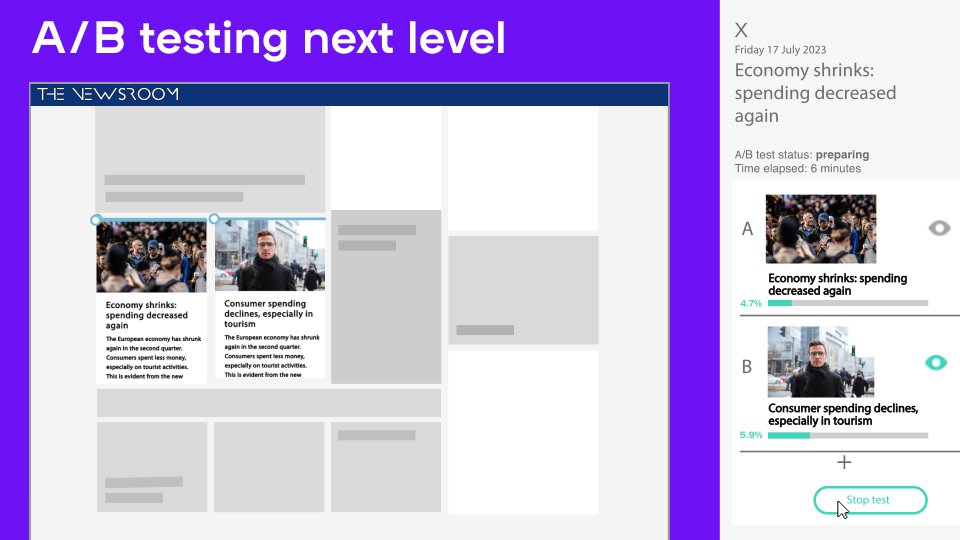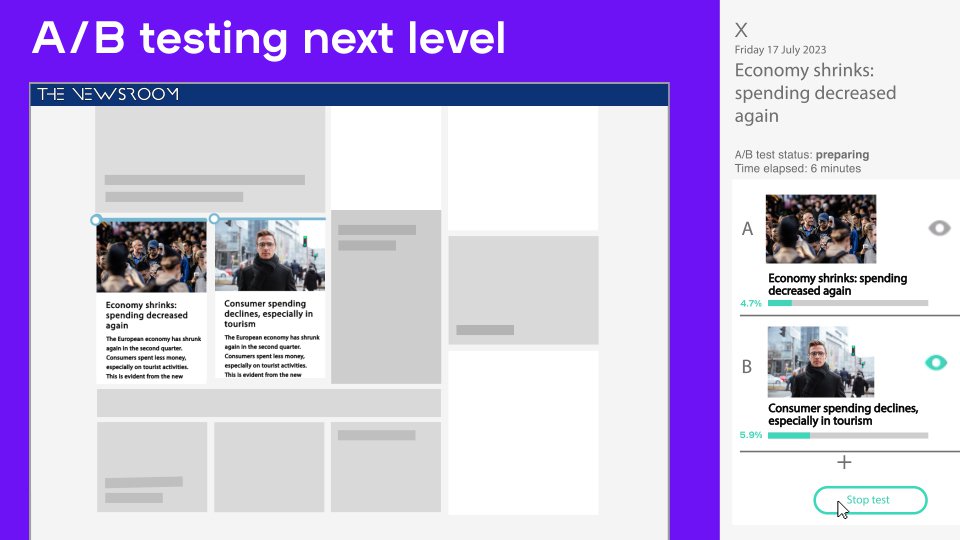Smartocto has made it possible to conduct image testing, allowing newsrooms to measure the impact of alternative visuals on their articles, ultimately enhancing article performance.
This feature is provided as a supplementary component within the feature Tentacles. Besides evaluating headlines and teasers, clients can incorporate this functionality to enhance the appeal of their articles to visitors. There is an extra charge associated with this service due to the substantial data consumption involved in image testing.
As with standard Tentacles functionality for testing headlines and leads/intros, image testing follows a similar process. Users can incorporate up to three alternative images at the front end of their website. Additionally, they have the option to modify the headline to better complement the new visuals.


